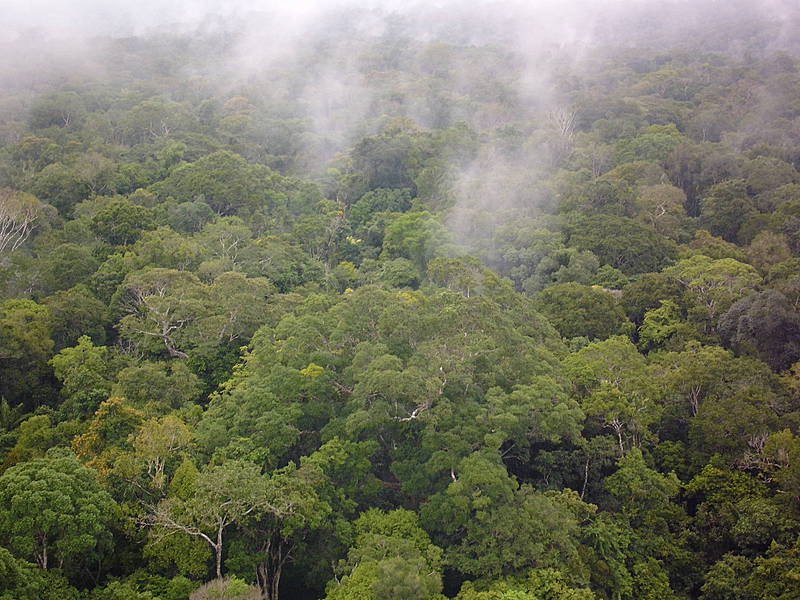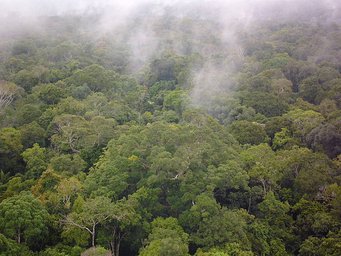How salt in the rainforest becomes clouds
Potassium salts from fungi and plants initiate the formation of aerosol particles upon which moisture from the air condenses
In the ecosystem of the rainforest, fungi and plants are important contributors to the development of mist and clouds. Researchers at the Max Planck Institute for Chemistry have now found out that these release salt particles to which organic molecules attach. Condensation nuclei are thereby formed, which the moisture of the rainforest condenses on forming water droplets. The discovery was made with the help of a new method using X-rays in which individual particles are microscopically and spectroscopically analyzed.
Mist and clouds arise if the air contains fine particulates upon which moisture condenses. In the natural rainforest, mist, clouds and precipitation form from such aerosol particles too.
Until now, it has been assumed that most aerosol particles above the Amazon rainforest only consist of organic material, and are formed through chemical reactions of gas molecules in the atmosphere. Volatile hydrocarbons such as isoprene are released from plants through and consequently transformed through photochemical oxidants into non-volatile organic molecules that adsorb one another, thereby forming aerosol particles.

A research team headed by Meinrat O. Andreae and Ulrich Pöschl at the Max Planck Institute for Chemistry have now discovered that not just organic molecules, but also very fine potassium salt particles participate in the formation of aerosols. These are mainly released from fungi, but also from plants in the rainforest, and serve as condensation nuclei to which the organic molecules can adsorb. Fungi and plants thus have direct influence on the number and properties of aerosol particles in the air and thereby also on the formation and composition of mist, clouds and precipitation in the rainforest.
Christopher Pöhlker succeeded in making the discovery in the course of his doctoral work at the Max Planck Graduate Center with the help of a new aerosol analysis method known as Scanning Transmission X-Ray Microscopy with Near Edge X-Ray Absorption Fine Structure (STXM-NEXAFS). In cooperation with colleagues from Germany, Brazil, India and the US, he used X-ray microscopes at the Synchrotron Light Source of Lawrence Berkeley National Laboratory in California and the Helmholtz Centre in Berlin, Germany (BESSY II) and was thereby able to detect extremely small amounts of potassium in organic aerosol particles that had been collected using air filters and ultra-thin plates in the Brazilian rainforest north of Manaus.
“We found three kinds of organic aerosol particles and potassium was contained in all of them,” reported Christopher Pöhlker. “In the beginning, we focused on carbon, oxygen and nitrogen contents of the organic materials. But then to our surprise, we found very high potassium levels of up to 20 percent,” added the chemist. Internal structures in the nanometre-to-micrometre-scale particles indicated that multi-phase processes, as they are known, play an important role in the oxidation and condensation of the organic gas molecules, in which various chemical phases such as mist or cloud liquid water and gel-like organic substances are involved.
The results help to identify and quantify the sources of organic aerosol particles. That, in turn, is important for understanding their interactions with clouds and precipitation in the natural climate system. The researchers hope thereby to also be able to better estimate the influence of human activities on global climate change in the future.
